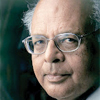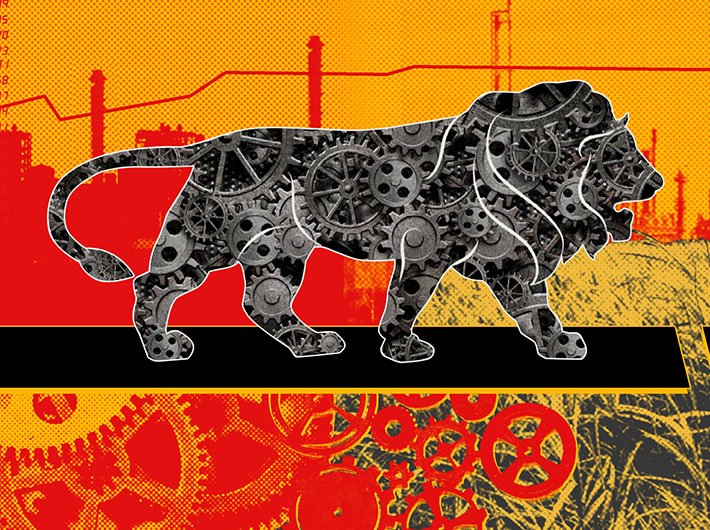Economic Survey focuses on skills as the crucial factor, but that is precipitate and premature
The prime minister’s pre-election exhortation or invitation, as the case may be, “Make in India”, made headlines then, and has remained in the news. The Economic Survey, tabled in parliament by the finance minister the day before the budget, devotes a chapter to it, which can be viewed as an official elaboration of the idea. The chapter owes much to the pen of the chief economic advisor, a distinguished economist who was brought in from Washington and who has dived into his job with competence and enthusiasm.
The chapter begins by asking for the missing object in the prime minister’s question: What should India make? It traces the question to Lewis who, surprisingly, is missing in the references at the end of the chapter. His is a confusing name, especially since the Survey omits his Christian name. There is John Lewis, a famous department store on Oxford Street in London, owned by a trust run for the benefit of its employees; if the whole world were converted to the John Lewis model, the problem highlighted by Thomas Piketty in his recent book, Capital in the Twenty-first Century, of the rich getting richer at the expense of workers, would disappear. David Ricardo preceded Piketty by 150 years. A rich businessman and speculator, he pointed out that limited supply of land was making landlords rich in England, while their workers remained poor. David had a nephew named John Lewis Ricardo, who pioneered the electric telegraph in Britain. There was also John Lewis, a Princeton development economist who was a great friend of India, ever since he spent some years in Delhi as chief of USAID in the 1960s. When he died in 2010, he asked his friends not to send flowers, but instead to send money to Pratham, the Indian non-government organisation that is trying to improve schooling.
But the Economic Survey does not mean any of these Lewes; it is referring to W Arthur Lewis, a West Indian economist, who wrote a paper in Manchester School of May 1954 entitled economic development with unlimited supplies of labour. It was a modernized version of David Ricardo’s model. It took a underdeveloped economy like India with “unlimited” supplies of poorly paid labour in agriculture, and a manufacturing sector with much higher productivity and wages; as manufacturing expanded, it would absorb the workers until the labour surplus disappeared and agricultural wages rose to the level of industrial wages.
The Economic Survey shows that this has not happened in India: the share of manufacturing, whether in output or employment, has not gone up in the past 30 years. Instead, it is the share of services in output that has gone up. Their share in employment has also inched up, though not much. The Survey takes the view that although population growth led to a rapid increase in labour supply, poor education left most of the workers unskilled, and neither industry nor services had any use for them. So while the prime minister’s obsession with Make in India is appropriate, it cannot be made to happen unless skills are implanted into workers. Occupational training is the way to develop India.
If the Survey is right in inferring that it was insufficient skills in the labour force that held back India’s industrialization, skill premia should have gone up. It offers no such evidence. Without it, the argument is not very persuasive. In particular, it is necessary to consider the alternative hypothesis, that it was lack of demand that was behind the low level of industrialization. High levels of industrial protection, which were maintained in the belief that they would lead to industrialization, persisted till the 1980s. After the 1991 crisis, protection was slowly dismantled; that should have led to deindustrialization. Bishwanath Goldar and V Renganathan of the Institute of Economic Growth showed that the average import penetration ratio in the 66 industries covered by input-output tables had gone up after the import liberalization of the early 1990s, from 8.6 per cent in 1989-90 to 14.1 per cent in 2003-04. But so had export-output ratio, from 9.8 to 13.1 per cent. The industrial balance of trade worsened from a surplus of 1.4 per cent to a deficit of 1 per cent. So there was modest deindustrialization – some net substitution of imports for domestic output – after trade liberalization.
There are other possibilities. For instance, industry, especially public sector industry, had privileged access to capital market and bank finance during the licence-permit raj, and lost it gradually after liberalization. Tax evasion has always been easier in real estate than in industry, and easier in unregistered small industry than in large industry. An explanation of India’s poor industrial growth has to be constructed from these and other building blocks; the Survey’s plumping for skills as the crucial factor is precipitate and premature.
(The article appears in the April 1-15, 2015, issue)

